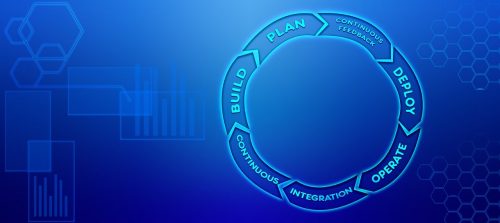Agile is a software project management methodology that fosters an innovative environment for delivering a quality product. Unlike its precursor Waterfall, which has a linear structure, the Agile method breaks development stages into small segments. The product’s development and testing take place almost simultaneously, in a reiterative fashion. Even after release, an Agile product can be upgraded or revised.
What Makes Agile Unique?
Agile is a client-centered approach that keeps the customer informed about all changes throughout the entire development process. Agile encourages the client to actively participate in the development process. Things often change during the course of development. The client may decide to do things differently, or add some new features. Because Agile is an explorative method that has no defined end-point, changes can be implemented at any stage of development.
Working on an Agile Team
Communication is a key factor in the Agile method. If an error or some issue arises, everyone working on the product gets informed. Fixes are made at the earliest possible stage, so that problems are resolved as soon as they arise.
The goal of Agile methodology is to produce a high-quality product in a short time span. Being on an Agile team is not a walk in the park. The best people in the field give their best efforts to produce the desired outcomes. Agile is about collaboration and mutual understanding. The better team members work together, the better the results produced.
Agile fosters a positive work environment. With so many things on their plates, developers need a safe and relaxing workspace. When things don’t go the way they should, a supportive work atmosphere can help alleviate pressure. Agile teams help each other to achieve the best results and get the work done.
The Agile Software Development Funnel
Smooth workflow is one of the best parts of Agile. If an error occurs, the product goes through the repair cycle repeatedly until the issue is resolved. Repetitive cycles at every stage are responsible for the delivery of a high-quality finished product. Unlike the Waterfall approach where it is difficult to go backward, the Agile process accepts change at any point in time. The stages of the Agile lifecycle are:
- Introduction of the concept
- Design
- Creation
- Testing
- Deployment
- Release
Agile development phases miraculously overlap as soon as a new project starts. When developers produce a new feature, the testing team gives almost immediate feedback. If they find a bug, the software gets fixed and retested until there are no issues. Sometimes, the software under development is partially released for use by prospective consumers, who also contribute to the feedback loop. The client can review all changes and request revisions at any time.
Getting it Done with Agile
The Agile method is about:
- ongoing innovative processes
- new discoveries
- exclusive products
- on-time delivery
- fast product development
- a dynamic environment
- change
- client participation
- client satisfaction
- improvement and education
Today, many IT companies produce high-quality products via the Agile method. Being developed in virtual space, the product is available not only to customers and stakeholders, but also to potential users, 24/7. From day one, clients and consumers can review changes, give feedback and make requests for features that fit their needs. Customers, stakeholders and users all participate in the development process, and that’s what Agile is all about.



